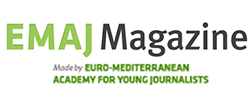Terres du Nil: LтАЩart des potiers avant Pharaon
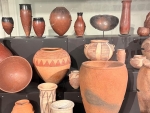 Last December at Mus├йe d’Arch├йologie nationale - Domaine national du Ch├вteau de Saint-Germain-en-Laye I attended the exhibition тАЬTerres du Nil: LтАЩart des potiers avant PharaonтАЭ on the pre-dynastic Egyptian history.
Last December at Mus├йe d’Arch├йologie nationale - Domaine national du Ch├вteau de Saint-Germain-en-Laye I attended the exhibition тАЬTerres du Nil: LтАЩart des potiers avant PharaonтАЭ on the pre-dynastic Egyptian history.
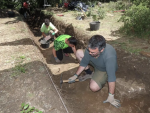 I am thrilled to have been part of this incredible adventure with an amazing team of professional archaeologists and students from the University of Burgos, rediscovering a Second Iron Age walled settlement in the province of Burgos, in central-north Spain.
I am thrilled to have been part of this incredible adventure with an amazing team of professional archaeologists and students from the University of Burgos, rediscovering a Second Iron Age walled settlement in the province of Burgos, in central-north Spain.
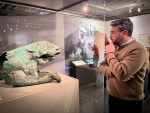 Founded around 2900 on the banks of the Euphrates, the city of Mari drew its power from its privileged position on trade routes, both land and river, connecting Anatolia and northern Syria to Mesopotamia and the Persian Gulf. The exhibition focuses on the last period of the cityтАЩs occupation, after it was integrated into the empire founded by Sargon of Akkad, who unified the various city-states of Mesopotamia under his rule around 2250.
Founded around 2900 on the banks of the Euphrates, the city of Mari drew its power from its privileged position on trade routes, both land and river, connecting Anatolia and northern Syria to Mesopotamia and the Persian Gulf. The exhibition focuses on the last period of the cityтАЩs occupation, after it was integrated into the empire founded by Sargon of Akkad, who unified the various city-states of Mesopotamia under his rule around 2250.
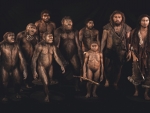 Who among us has ever imagined human evolution as a straight line depicting the gradual transformation from the early Paranthropus to various ЁЭР╗ЁЭСЬЁЭСЪЁЭСЬ species, culminating in ЁЭР╗ЁЭСЬЁЭСЪЁЭСЬ ЁЭСаЁЭСОЁЭСЭЁЭСЦЁЭСТЁЭСЫЁЭСа? However, recent paleoanthropological studies reveal a far more complex reality. Evolution was marked by a rich biodiversity of genera and species. These species sometimes coexisted in the same periods and regions, competing for food resources and territorial control.
Who among us has ever imagined human evolution as a straight line depicting the gradual transformation from the early Paranthropus to various ЁЭР╗ЁЭСЬЁЭСЪЁЭСЬ species, culminating in ЁЭР╗ЁЭСЬЁЭСЪЁЭСЬ ЁЭСаЁЭСОЁЭСЭЁЭСЦЁЭСТЁЭСЫЁЭСа? However, recent paleoanthropological studies reveal a far more complex reality. Evolution was marked by a rich biodiversity of genera and species. These species sometimes coexisted in the same periods and regions, competing for food resources and territorial control.
 Pi was already known by various ancient civilisations, like the Babylonians and the Egyptians, for example, who had come close to the number 3.14. The former, in fact, expressed ╧А as 25тБД8, that is, ╧А=3.125; while the latter had calculated it to be ╧А=3.1605. In the case of the Egyptians, we know this thanks to the Rhind Papyrus, the most extensive Egyptian mathematical papyrus that has come down to us, written in 1650 B.C. during the 15th dynasty and inspired by an even older text dating back to the 20th-18th centuries B.C.
Pi was already known by various ancient civilisations, like the Babylonians and the Egyptians, for example, who had come close to the number 3.14. The former, in fact, expressed ╧А as 25тБД8, that is, ╧А=3.125; while the latter had calculated it to be ╧А=3.1605. In the case of the Egyptians, we know this thanks to the Rhind Papyrus, the most extensive Egyptian mathematical papyrus that has come down to us, written in 1650 B.C. during the 15th dynasty and inspired by an even older text dating back to the 20th-18th centuries B.C.
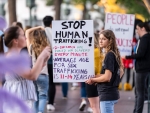 According to the European Commission, over 10,000 victims of human trafficking were registered in the European Union in 2022. A majority of these individuals were female (63%) and non-EU citizens (60%), trafficked primarily for sexual exploitation and forced labor/services (around 40% each). Around 20% of them were trafficked for organ removal and other purposes.
According to the European Commission, over 10,000 victims of human trafficking were registered in the European Union in 2022. A majority of these individuals were female (63%) and non-EU citizens (60%), trafficked primarily for sexual exploitation and forced labor/services (around 40% each). Around 20% of them were trafficked for organ removal and other purposes.















